Why Tokyo is Great for Solo Travelers
Tokyo is a dream for solo travelers. It’s incredibly safe, even at night, and the public transport system is so efficient that you’ll never feel lost. The city is a mix of modern skyscrapers and ancient temples, so you can experience the best of both worlds. Plus, the locals are polite and helpful, even if you don’t speak Japanese.
One of the things I love most about Tokyo is how easy it is to navigate. The train system is punctual and well-organized, and there are signs in English everywhere. Even if you’re traveling alone, you’ll never feel isolated because there’s always something to see or do.
The Vibe of Tokyo
Tokyo is fast-paced but orderly. One minute, you’re surrounded by neon lights and futuristic technology in Shibuya, and the next, you’re walking through the peaceful gardens of Meiji Shrine. It’s a city that never sleeps but still feels welcoming and easy to navigate.
During my first visit, I was amazed by how clean and safe the city felt. Even in crowded areas like Shibuya Crossing, there’s a sense of order and respect. It’s a place where tradition meets innovation, and you can feel that energy everywhere you go.
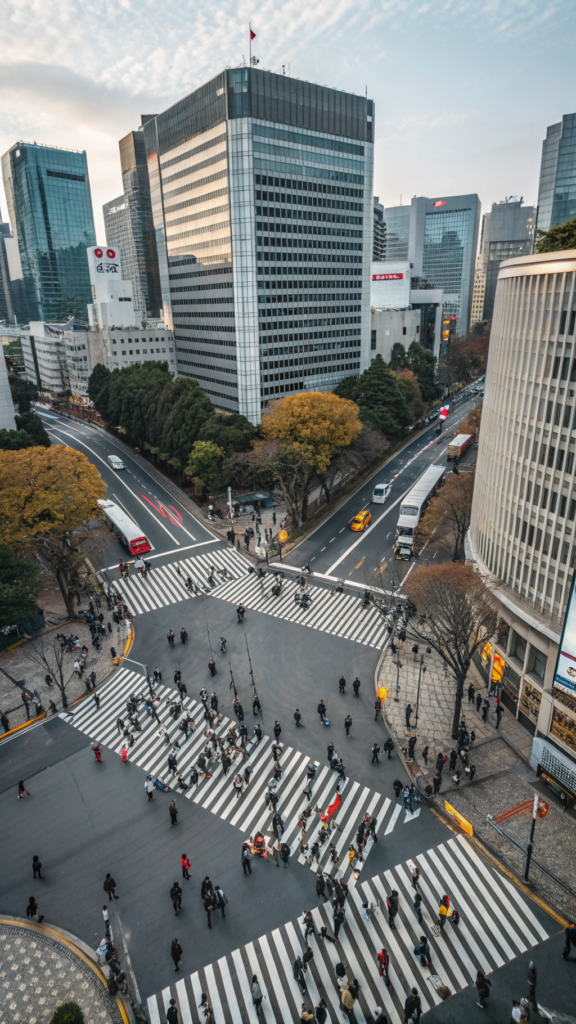
Best Time to Visit
The best times to visit Tokyo are during spring (March-May) for the iconic cherry blossoms or autumn (September-November) for mild weather and stunning fall foliage. I visited in spring, and seeing the cherry blossoms in full bloom at Ueno Park was magical. Trust me, you’ll want to plan your trip around these seasons!
If you visit in spring, don’t miss the cherry blossom festivals (hanami) in parks like Ueno and Shinjuku Gyoen. In autumn, places like Rikugien Garden and Meiji Jingu Gaien are perfect for enjoying the vibrant fall colors.
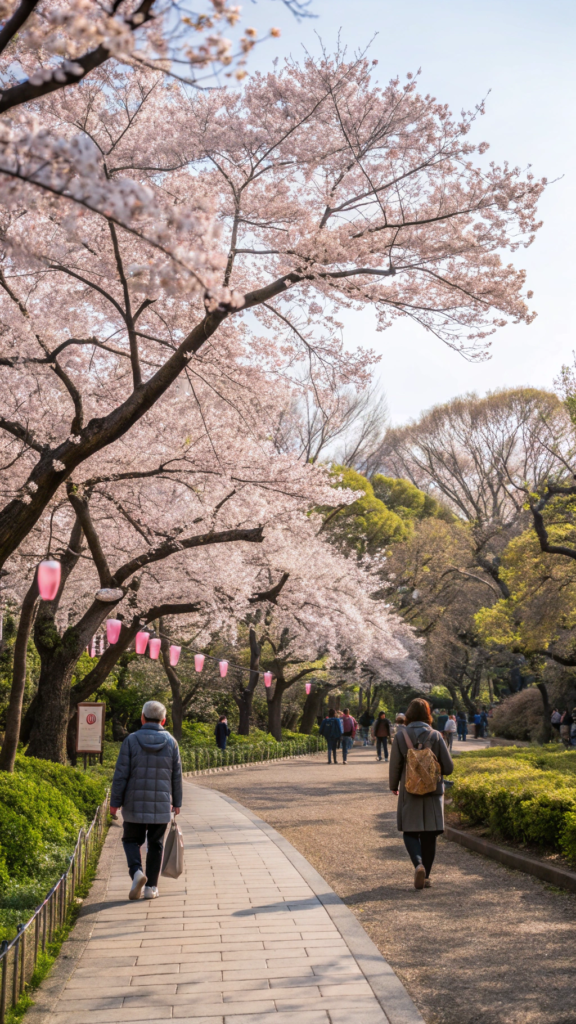
Practical Tips for Tokyo Solo Travelers
Getting There
Most international flights land at Narita or Haneda Airport. I flew into Haneda, which is closer to the city center, and took the Tokyo Monorail to my hotel. For getting around, I highly recommend getting a Suica card or JR Pass. They make traveling on trains and buses a breeze. Pro tip: Download the Japan Travel app or Google Maps for real-time train schedules and routes.
If you’re arriving at Narita Airport, the Narita Express train is a convenient option to get to central Tokyo. It takes about an hour and drops you off at major stations like Tokyo Station and Shinjuku.
Language Barriers
While basic English is spoken in tourist areas, learning a few Japanese phrases can make your trip smoother. I always use “arigatou” (thank you) and “sumimasen” (excuse me/sorry). If you’re stuck, Google Translate is a lifesaver—just type or speak your question, and it’ll translate it into Japanese.
I also recommend downloading an offline Japanese dictionary app like Japanese by Renzo. It’s helpful for looking up words or phrases when you don’t have internet access.
Local Etiquette
Japanese culture is all about respect, and knowing a few etiquette rules will help you blend in:
- Bow when greeting someone: It’s a sign of respect.
- Remove your shoes: Before entering homes, traditional inns (ryokans), or even some restaurants.
- No eating while walking: It’s considered impolite. Instead, find a spot to sit and enjoy your snack.
Another tip: When using escalators, stand on the left side and leave the right side open for people in a hurry. This is especially important in busy areas like train stations.
What to Pack for Tokyo Solo Travelers
- Comfortable walking shoes: You’ll be walking a lot, so make sure your feet are happy. I recommend sneakers or supportive sandals.
- Portable Wi-Fi device: Staying connected is key for navigation and translation. You can rent one at the airport or book it online before your trip.
- Reusable water bottle: Save money and stay hydrated. There are vending machines everywhere, but they mostly sell bottled drinks.
- Cash: While credit cards are accepted in many places, smaller shops and restaurants often only take cash. I always carry around ¥10,000-¥20,000 in yen.
Suitable Clothes
Pack casual and modest clothing. Bring layers for varying weather and a light jacket for evenings. If you’re visiting in spring or autumn, a light scarf or sweater is perfect for cooler mornings and evenings.
For summer (June-August), it can get hot and humid, so pack breathable fabrics like cotton or linen. In winter (December-February), a warm coat, scarf, and gloves are essential.
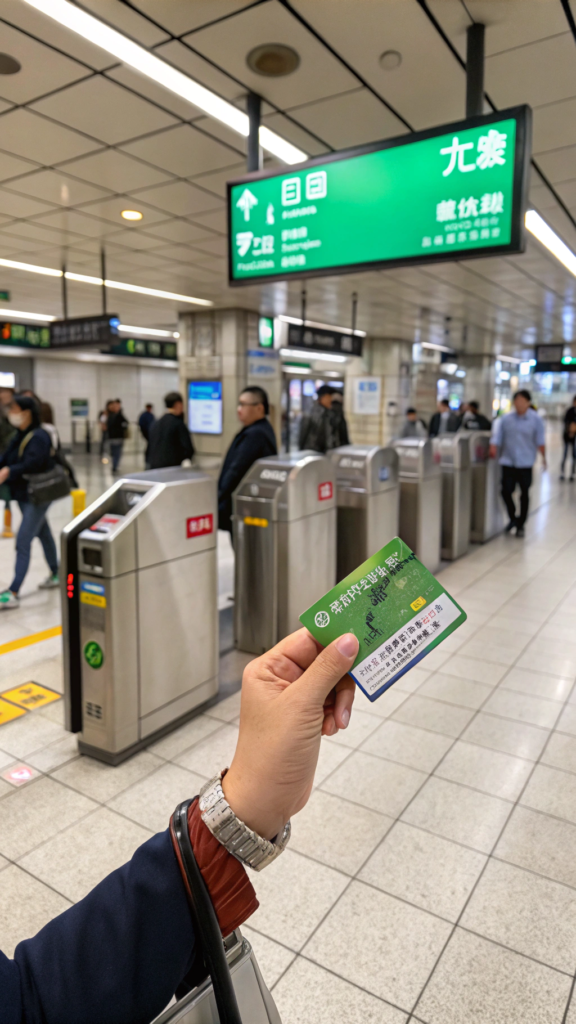
Personal Recommendations
Must-Try Food
- Sushi at Tsukiji Market: Fresh, flavorful, and unforgettable. Don’t miss the tuna auction if you’re an early riser!
- Ramen at Ichiran: A solo traveler’s dream—private booths and delicious ramen. You can customize your bowl to your liking.
- Matcha desserts in Asakusa: Try matcha ice cream or traditional wagashi (Japanese sweets). I highly recommend Suzukien Asakusa for their rich matcha gelato.
Hidden Gems
- Shimokitazawa: A trendy area for vintage shopping and quirky cafes. It’s less crowded than Harajuku but just as charming.
- Omoide Yokocho: A cozy alley in Shinjuku filled with tiny izakayas (Japanese pubs). It’s perfect for solo dining and meeting locals.
Personal Experience
One of my favorite memories is attending a traditional tea ceremony. It was so peaceful and gave me a deeper appreciation for Japanese culture. Another highlight was exploring Akihabara’s tech scene—it felt like stepping into the future!
I also loved wandering through the streets of Yanaka, a historic neighborhood that feels like old Tokyo. It’s a great place to escape the crowds and see a different side of the city.
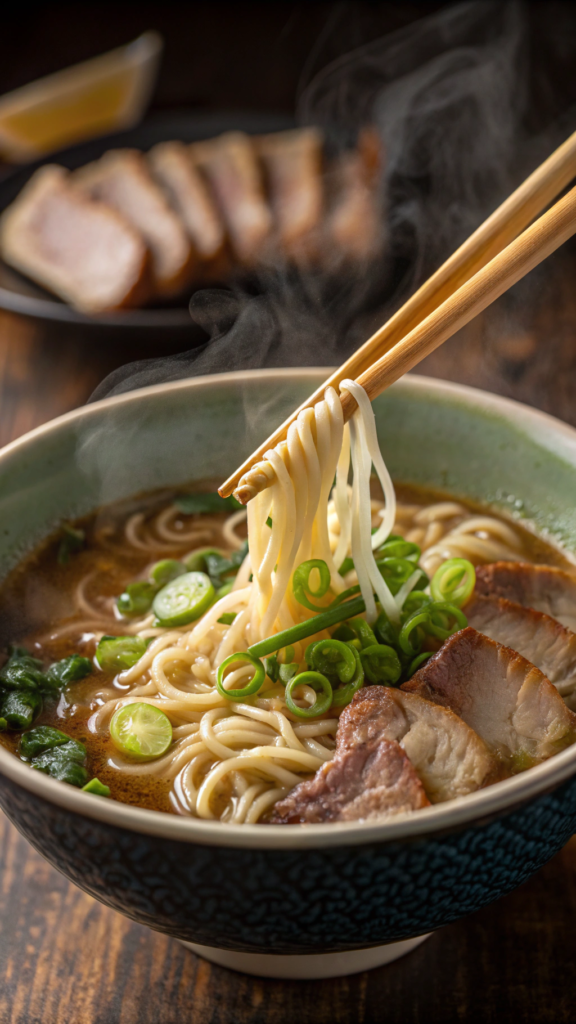
Safety Considerations
Is Tokyo Safe for Solo Travelers?
Yes, Tokyo is extremely safe, even at night. Just keep an eye on your belongings in crowded areas like Shibuya or Shinjuku.
Emergency Contacts
- Police: 110
- Ambulance/Fire: 119
- Your country’s embassy details
Tips for Staying Safe
- Use coin lockers for luggage at train stations.
- Avoid unlicensed taxis—stick to official ones or public transport.
- Carry a hotel business card in case you get lost.
Popular Tours for Tokyo Solo Travelers
Tokyo Food Tour
Embark on a mouthwatering journey through Tokyo’s vibrant food scene with a guided Tokyo Food Tour , perfect for solo traveler who love to eat and explore culinary. Whether you’re wandering the bustling alleys of Shinjuku or diving into the lively atmosphere of Tsukiji Market , these tours offer an unforgettable taste of Japan’s rich culinary heritage.
Explore hidden eateries in Shinjuku or Tsukiji Market with a local guide. You’ll try sushi, ramen, and other Japanese delights while learning about the culture.
In Shinjuku , known as Tokyo’s entertainment hub, there is a hidden eateries tucked away in narrow streets and back alleys. These secret gems often serve up authentic dishes like tonkotsu ramen (rich pork broth noodles), takoyaki (octopus balls), and okonomiyaki (savory pancakes). Along the way, your guide will share fascinating stories about Japanese food culture, from the art of making soba noodles to the etiquette of slurping ramen loudly as a sign of appreciation.
For seafood lovers, a visit to Tsukiji Market —the world-famous fish market—is a must. Even though the wholesale section has moved to Toyosu, the outer market remains a paradise for food enthusiasts. Here, you’ll sample fresh sushi made with melt-in-your-mouth tuna belly, sweet tamagoyaki (Japanese omelet), and steaming bowls of miso soup. You will love trying quirky snacks like squid ink crackers or sushi-shaped candy sold by vendors along the way.
These tours aren’t just about eating—they’re also educational and interactive. Many guides provide hands-on experiences such as teaching how to roll their own sushi or use chopsticks like pros. Plus, they cater to all dietary preferences, ensuring you finds something delicious to enjoy .
Whether you’re indulging in street food under neon lights or sipping matcha tea at a traditional café, a Tokyo Food Tour is more than just a meal—it’s a feast for the senses and a chance to connect with Japan’s heart and soul. So bring your appetite and curiosity, and get ready to discover flavors that will stay with you long after your trip ends !
Cultural Experience: Step Into Japan’s Rich Traditions
One of the most rewarding ways to connect with Japan’s timeless heritage is by participating in authentic cultural activities like a traditional tea ceremony or dressing up in a kimono. These experiences are not only educational but also incredibly memorable. Whether you’re exploring historic Asakusa or other parts of Tokyo, these immersive activities offer a deeper understanding of Japanese customs and aesthetics.
The Art of the Tea Ceremony
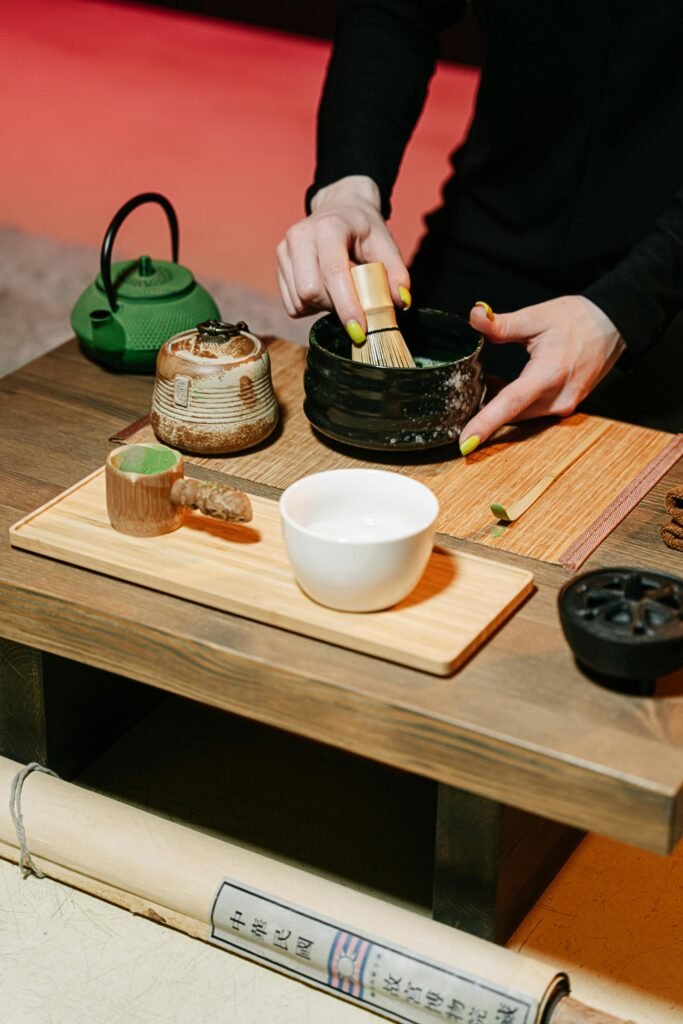
A Japanese tea ceremony, known as chanoyu or sado, is far more than just drinking tea—it’s an elegant ritual that embodies harmony (wa), respect (kei), purity (sei), and tranquility (jaku). Guided by a skilled tea master, you’ll learn how to prepare and savor matcha (powdered green tea) while appreciating the serene atmosphere of a traditional tatami-mat room.
In Asakusa, many tea houses near Sensō-ji Temple offer tea ceremonies where even young children can participate. Kids often enjoy the quiet focus required to whisk their own cup of matcha and nibble on delicate wagashi (traditional sweets) paired with the slightly bitter tea. This meditative experience provides a calming break from the hustle and bustle of Tokyo’s busy streets.
Wearing a Kimono in Asakusa
For solo traveler seeking a hands-on cultural adventure, renting a kimono is a fantastic way to step back in time and feel like part of old Edo-era Japan. Many shops in Asakusa specialize in kimono rentals for tourists, offering everything from simple designs for kids to elaborate silk kimonos for adults. Staff will help dress you in the traditional garment, complete with accessories like obi belts, wooden sandals (geta), and hair ornaments.
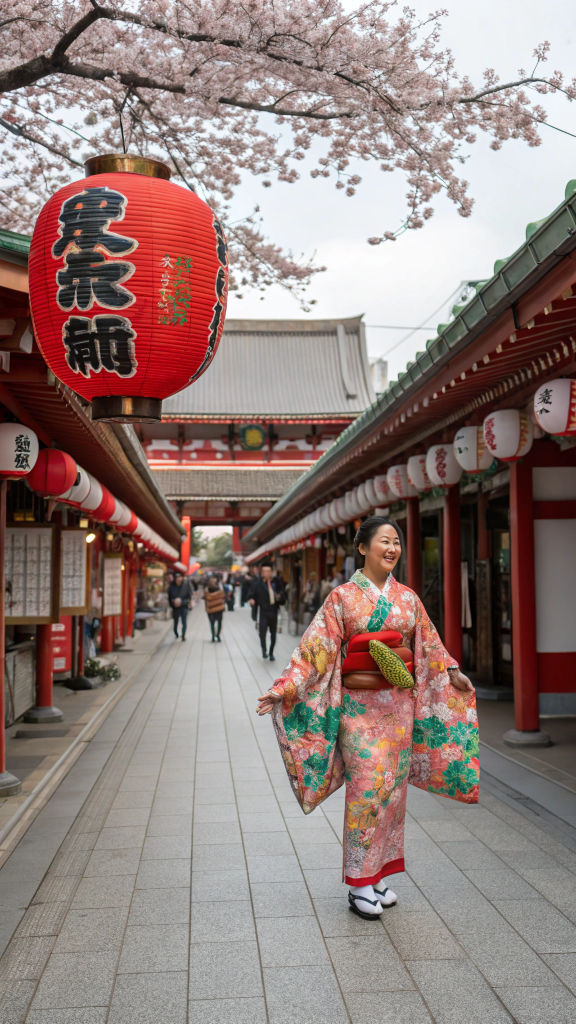
Once dressed, take a stroll through Asakusa’s charming streets, pose for photos under the iconic Kaminarimon Gate, or visit Sensō-ji Temple to fully embrace the spirit of ancient Japan. Some rental packages even include guided tours, giving you insider knowledge about local history and culture. It’s a fun yet meaningful way while creating Instagram-worthy memories.
Why These Experiences Matter
Participating in these cultural traditions allows you to appreciate the elegance and mindfulness woven into everyday Japanese life. From the graceful movements of the tea ceremony to the intricate patterns of a kimono, each activity tells a story about Japan’s deep-rooted values and artistic expression. Plus, it’s a great opportunity to slow down and reflect during your busy travel itinerary.
Whether you’re sipping matcha in a tranquil tea house or walking in the footsteps of samurai in a rented kimono, these cultural experiences will leave you with a profound appreciation for Japan’s enduring beauty and hospitality. Add them to your Tokyo itinerary for a truly enriching your adventure!
Day Trip to Nikko or Hakone: Escape the City and Discover Japan’s Natural Beauty
If you’re looking for a refreshing break from Tokyo’s urban energy, a day trip to Nikko or Hakone offers the perfect opportunity to immerse yourself in Japan’s stunning natural landscapes, spiritual heritage, and iconic landmarks like Mount Fuji. Both destinations are easily accessible by train, making them ideal for travelers who want to experience the serene countryside without straying too far from the city.
Why Choose Nikko?
Nikko is a UNESCO World Heritage Site nestled in the lush mountains of Tochigi Prefecture, just a 2-hour train ride from Tokyo. Known for its breathtaking shrines, temples, and waterfalls, Nikko provides a peaceful retreat steeped in history and spirituality.
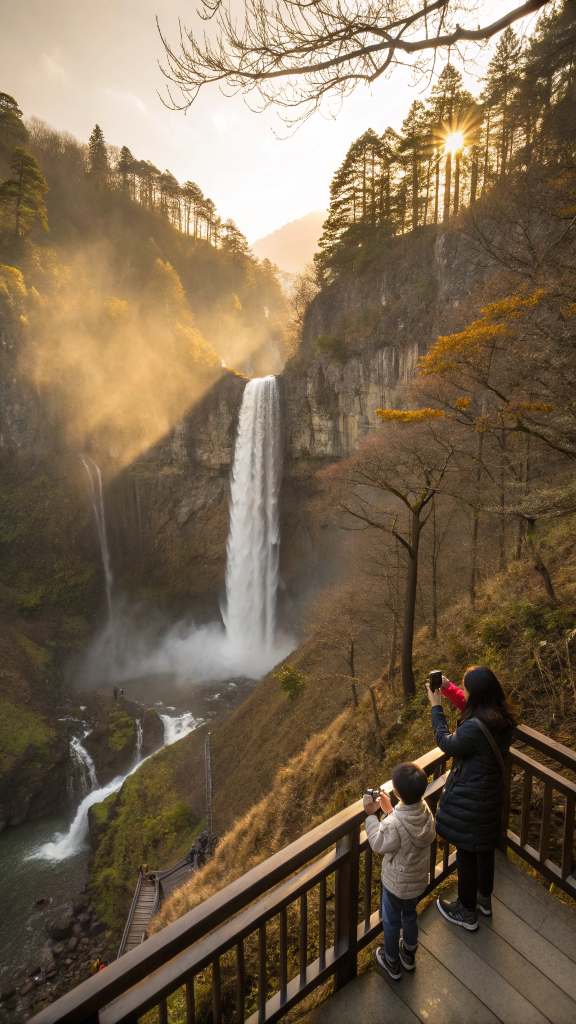
Must-See Attractions:
- Toshogu Shrine: This lavishly decorated shrine is the mausoleum of Tokugawa Ieyasu, the founder of the Tokugawa shogunate. Its intricate carvings, including the famous “Three Wise Monkeys,” make it a highlight of any visit.
- Kegon Falls: One of Japan’s most beautiful waterfalls, Kegon Falls plunges dramatically into a deep ravine and can be viewed from an observation deck or via an elevator that takes you closer to the base.
- Lake Chuzenji: Surrounded by towering mountains, this pristine lake is perfect for a leisurely walk or boat ride. In autumn, the fiery red and gold foliage creates a postcard-perfect scene.
- Family-Friendly Perks:
Nikko offers plenty of outdoor activities, such as hiking trails suitable for all ages and scenic spots where kids can enjoy nature. Don’t forget to try local specialties like yuba (tofu skin) dishes at nearby restaurants!
Why Choose Hakone?
Hakone, located in Kanagawa Prefecture, is renowned for its hot springs (onsen), art museums, and unparalleled views of Mount Fuji. It’s a fantastic destination for families seeking relaxation and adventure in equal measure.
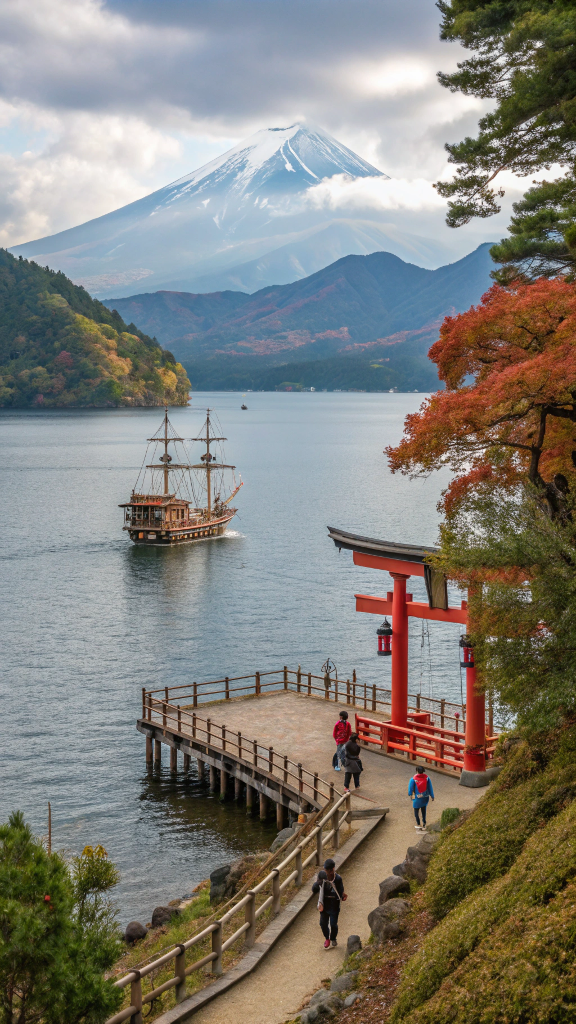
Must-See Attractions:
- Hakone Shrine: Nestled beside Lake Ashi, this picturesque shrine features bright red torii gates that seem to float on the water during foggy mornings—a magical sight not to be missed.
- Pirate Ship Cruises on Lake Ashi: Hop aboard a replica pirate ship for a fun and relaxing cruise across the lake, offering stunning views of Mount Fuji on clear days.
- Owakudani Valley: This volcanic valley is home to steaming sulfur vents and hot springs. Visitors can sample kuro-tamago (black eggs), which are said to add seven years to your life according to local legend.
- Hakone Open-Air Museum: Perfect for art-loving families, this sculpture park features interactive installations, Picasso exhibits, and sprawling gardens where kids can run around freely.
- Hot Spring Experience:
Hakone is synonymous with onsen, and many ryokans (traditional inns) offer day-use baths for visitors who don’t stay overnight. Soaking in a natural hot spring surrounded by forested hills is a rejuvenating experience for both parents and kids—just check if they have family-friendly facilities .
Perfect for Escaping the City Hustle
Both Nikko and Hakone provide a soothing contrast to Tokyo’s fast-paced lifestyle. Whether you’re marveling at centuries-old temples, soaking in therapeutic hot springs, or gazing at the majestic Mount Fuji, these destinations allow you to slow down and appreciate Japan’s quieter side.
Travel Tips:
- Take advantage of the JR Pass or regional passes like the Hakone Free Pass, which cover trains, buses, and boats, making transportation seamless and cost-effective.
- Plan your itinerary based on the season—spring brings cherry blossoms, summer offers lush greenery, autumn dazzles with vibrant foliage, and winter transforms the region into a snowy wonderland .
So pack your camera, comfortable shoes, and sense of adventure—Nikko and Hakone await to show you the best of Japan beyond the city limits! 🌄🌸
Anime and Gaming Tour: Dive into Tokyo’s Vibrant Pop Culture Scene
For solo traveler who love anime, manga, video games, or quirky fashion, a trip to Akihabara and Harajuku is an absolute must. These two neighborhoods are the beating heart of Japan’s pop culture scene, offering endless opportunities to immerse yourself in everything from retro arcade games to cutting-edge cosplay trends. Whether you’re hunting for rare anime merchandise, exploring themed cafes, or marveling at Harajuku’s bold street style, this tour promises excitement and creativity around every corner.
Akihabara: The Otaku Paradise
Known as the mecca for anime, manga, and gaming enthusiasts, Akihabara is a sensory overload of neon lights, towering electronics stores, and shops bursting with collectibles. It’s the perfect destination for families with pop culture fans of all ages.
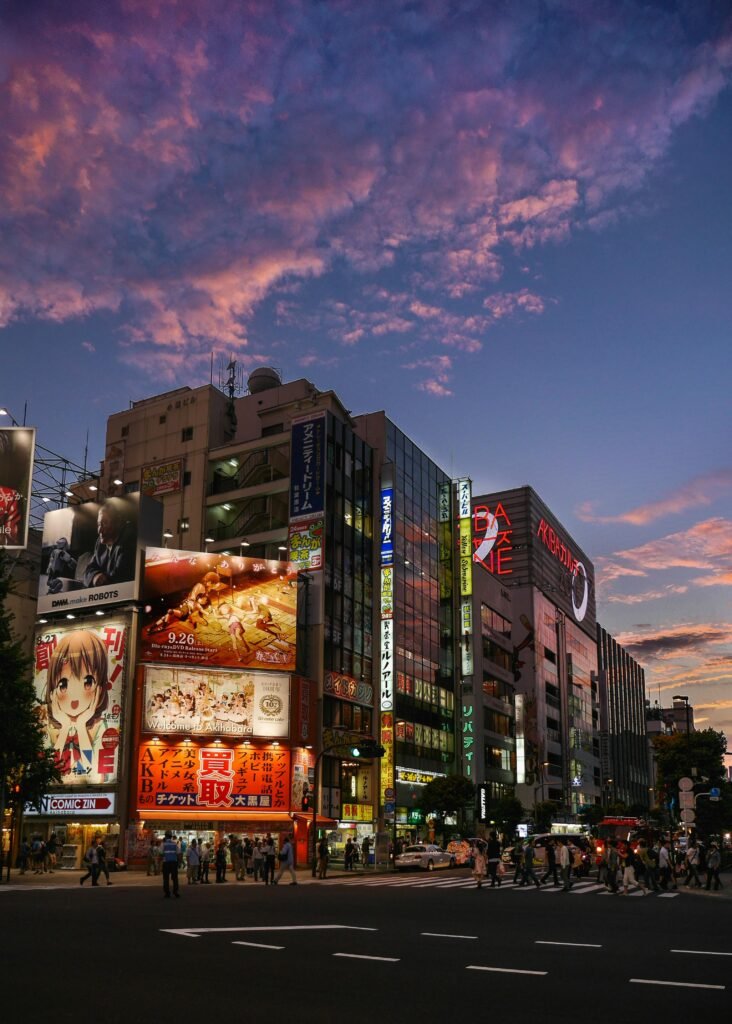
Must-Visit Spots:
- Mandarake Complex: This multi-story treasure trove is packed with manga, figurines, posters, and vintage toys. Kids will love browsing shelves filled with their favorite characters, while adults might find nostalgic gems from their childhood.
- Retro Game Stores: Dive into nostalgia at places like Super Potato, where you can find classic consoles like the Nintendo 64 and PlayStation games, alongside modern releases. Many stores even have playable demo stations!
- Themed Cafes: Akihabara is famous for its themed cafes, such as maid cafes, where servers dress as maids and entertain guests with cute songs and games, or anime character cafes featuring beloved franchises like Pokémon or My Hero Academia. These are fun experiences that both kids and parents can enjoy together.
- Interactive Fun:
Don’t miss out on the arcades scattered throughout Akihabara. From claw machines stocked with plushies to rhythm games and virtual reality setups, these arcades cater to players of all skill levels. Families can bond over friendly competitions or team up to win prizes.
Harajuku: Quirky Fashion and Kawaii Culture
Just a short train ride away, Harajuku offers a completely different but equally exciting side of Tokyo’s pop culture. Famous for its avant-garde fashion and kawaii (cute) aesthetic, Harajuku is a dream come true for anyone who loves bold colors, unique designs, and playful vibes.
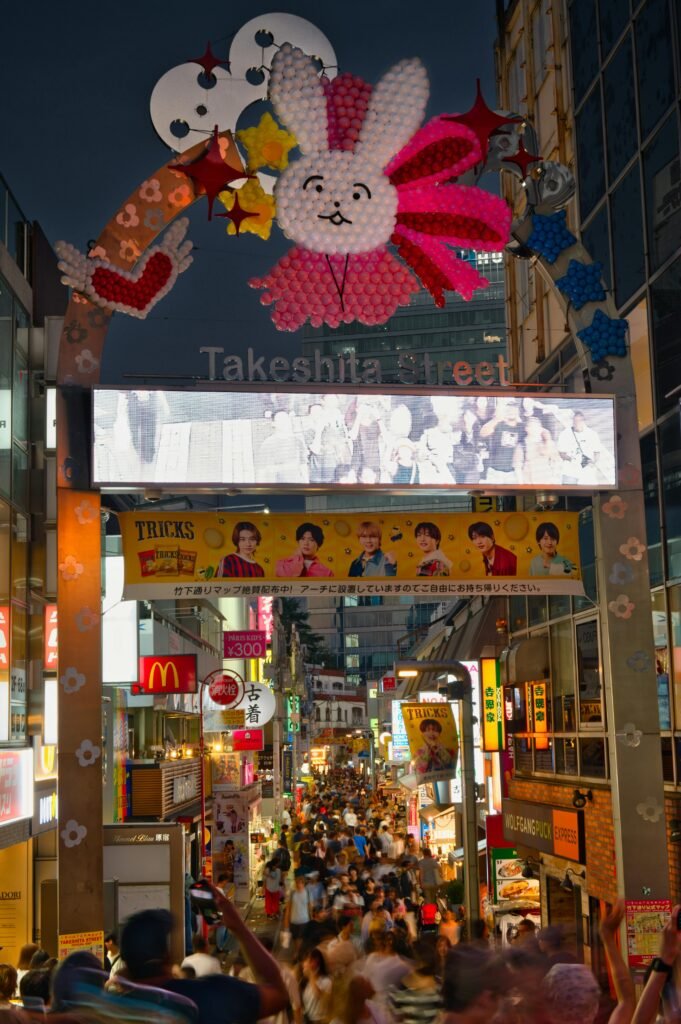
Must-Visit Spots:
- Takeshita Street: This bustling pedestrian street is lined with shops selling everything from colorful wigs and handmade accessories to anime-inspired clothing. You will adore trying on whimsical outfits,or you might gravitate toward trendy sneakers and jewelry. Be sure to stop for a photo op at one of the many Instagram-worthy murals along the way!
- Kiddy Land: A paradise for toy lovers, this massive store features floors dedicated to popular franchises like Hello Kitty, Studio Ghibli, and Marvel. You’ll find limited-edition items here that make for perfect souvenirs or gifts.
- Crepe Stands: Fuel your adventure with a sweet treat from one of Harajuku’s famous crepe stands. Choose from flavors like matcha cream, fresh fruit, or Nutella—it’s impossible not to smile while enjoying these colorful snacks .
- Cosplay and Creativity:
On weekends, keep an eye out for cosplayers dressed as their favorite anime or game characters near Yoyogi Park. Watching—or even joining in—this celebration of fandom is a highlight for many visitors. Some travelers even rent costumes to fully embrace the experience.
Pro Tips for Your Anime and Gaming Adventure
- Plan Ahead: Make a list of must-visit shops or cafes based on your interests—Akihabara has countless options, so it’s easy to get overwhelmed without a plan.
- Bring Cash: While credit cards are accepted in many places, smaller shops and vending machines often require cash. Having yen on hand ensures you won’t miss out on impulse buys!
- Respect Local Etiquette: In anime shops, avoid opening sealed packages or taking photos unless explicitly allowed. This helps maintain harmony for fellow fans and shopkeepers alike.
Whether you’re chasing rare collectibles, snapping pics in outrageous outfits, or simply soaking up the electric atmosphere, an Anime and Gaming Tour through Akihabara and Harajuku is a journey into the heart of Japan’s dynamic pop culture world. Get ready to geek out and create unforgettable memories! 🎮✨🎨
Tour Details
| Tour Type | Duration | Group Size | Inclusions | Cost |
|---|---|---|---|---|
| Food Tour | 3-4 hours | 6-10 people | Guide, meals | $50-$100 |
| Cultural Experience | 2-3 hours | Small groups | Guide, activity | $30-$80 |
| Day Trip | Full day | 6-12 people | Guide, transportation | $100-$150 |
| Anime and Gaming Tour | 3-4 hours | Small groups | Guide, entry fees | $50-$120 |
Why These Tours are Great for Tokyo Solo Travelers
- Social Aspect: Group tours are a fantastic way to meet other travelers.
- Safety: Tours are well-organized and led by knowledgeable guides.
- Flexibility: Many tours allow solo travelers to join easily.
FAQs
Q: Can I join tours as a solo traveler?
A: Absolutely! Most tours welcome solo travelers and encourage group interaction.
Q: Is tipping required in Japan?
A: No, tipping is not customary and can even be considered rude.
Common Challenges & How to Overcome Them
- Language Barrier: Use Google Translate or learn basic phrases.
- Navigating Public Transport: Download offline maps or use apps like Google Maps and Hyperdia.
- Solo Dining: Try ramen shops with counter seating or conveyor belt sushi restaurants.
Key Takeaways
- Tokyo is safe, clean, and perfect for solo travelers.
- Spring and autumn are the best times to visit.
- Join food tours, cultural experiences, or day trips to make the most of your trip.
- Pack comfortable shoes, a portable Wi-Fi device, and learn a few Japanese phrases.
Conclusion
Tokyo is a dream destination for solo travelers. With its mix of modern and traditional experiences, delicious food, and friendly locals, you’ll never run out of things to do. So pack your bags, book a tour, and get ready for an unforgettable adventure!






